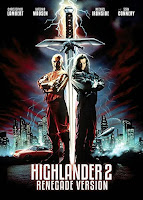"'There's worse things than being dead,' I had said." (p. 283)
Prompted by a recent discussion on the radio of Octavia Butler's Kindred, I reread this book that has haunted me for decades. It's about Dana, a 27 year-old black woman living just outside Los Angeles in 1976, who keeps finding herself back in the early nineteenth century, on a plantation near Baltimore owned by her ancestors. One direct ancestor, Rufus, is the no-good, controlling and unpredictable son of the owner, and Dana realises that he will someday force himself on a slave called Alice, and have a child from which Dana is descended. Until that happens, she must do more than merely survive in this appallingly hostile environment - for all his faults and cruelty, she must keep Rufus from harm.
The title, then, is a pun on Dana's dread for this relative with whom she is somehow bound. As with A Connecticut Yankee in King Arthur's Court, we're never told quite why she travels in time, nor how Rufus can summon her back from the future when his life is under threat. She can only return home, briefly, when her own life is in danger - which happens frequently enough. There's then what happens with her white husband Kevin while she's away, and whether she can transport things or even people with her that might help her survive. It's full of incident and shocking twists as Butler explores the territory: the practicalities against escaping; the state of medicine at the time; the way other black people of the time treat this trouser-wearing, educated black woman; the necessary pragmatism when you don't have any rights and live under constant threat of violence.
It's so brutal, and Dana and other characters under such unrelenting threat, that I stopped and started through it, sometimes only managing a few pages at a time - it's not exactly the right thing to go with lockdown-induced anxiety. Yet it's also a very timely read, exploring the legacy of slavery on us today. The 1976 "present" is no coincidence, where at one point Dana - back in her own time - is torn over celebrating the bicentennial. She refers to the "older people" of her own time who do double takes when they see her with her white husband. There's a sense, too, of how much easier life is for him - in the past and present - compared to what she endures.
I've read a fair number of time-travel stories, many of them addressing race to one degree or another, but this is direct and unflinching, and as much about the haunted now as it is then. Dana is left mutilated by her experience, physically scarred by the past as she lives in the present. We end with her revisiting the places where she was once trapped, looking for the house she once lived in, the grave of the man she was linked to, any trace of the slaves - the people - she knew. There are hauntingly few clues as to what became of them, which implies its own awful story. The implication is that she - and we - continue to live in their shadow.
A few years ago, I researched my own family history and learned that the Guerriers were among the first refugees, arriving in London in 1677, though the paucity of records means we can't be sure of the lineage until 1730. But other branches of my family include those descended from slaves and those descended from slavers. The database of Legacies of British Slavery holds a record for Mary Turner (née Trench), born 9 July 1815 and my great-great-great grandmother (or: her grandson was the father of my grandpa, who died in 2007). On 17 October 1836, Mary was granted £100 13s 8d as compensation for the emancipation of five slaves she owned in Clarendon, Jamaica. Her father received much more. That weighs heavily and I am keen to read Alex Renton's new book, Blood Legacy.
"'You probably needed to come for the same reason I did.' He shrugged. 'To try to understand. To touch the solid evidence that those people existed.'" (p.295)





























